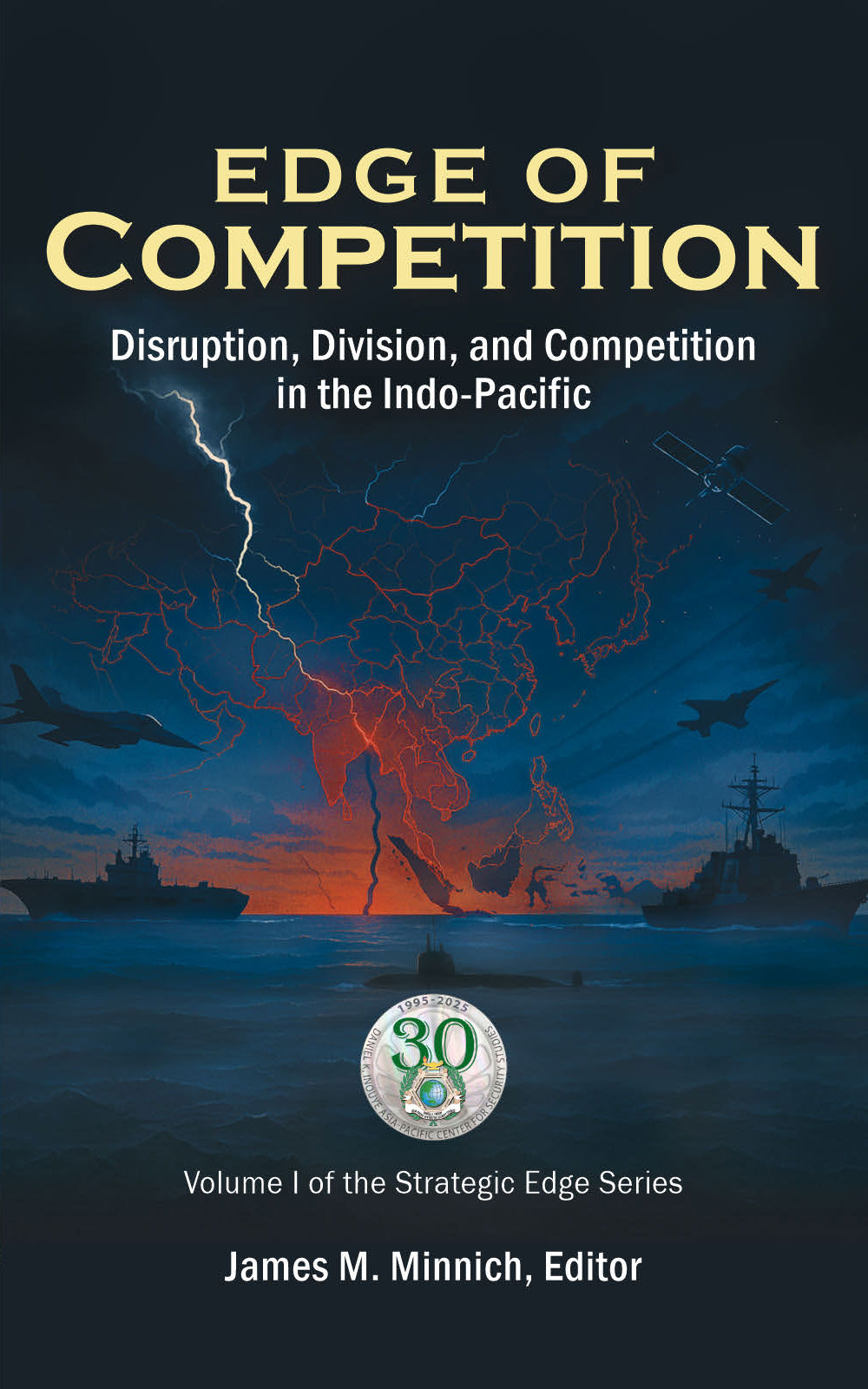Chapter 1
Edges of Instability
James M. Minnich
In a time of drastic change, it is the learners who inherit the
future. The learned usually find themselves equipped to live in a
world that no longer exists.
— Eric Hoffer, American philosopher, Reflections on
the Human Condition, 1973
Introduction: Navigating the Edges of Instability
Predawn radar screens in Kaohsiung flared as Chinese fighters and bombers brushed Taiwan’s air defense identification zone, one of dozens of incursions each month. No sirens sounded, yet the silent warning revealed how little time Taipei might have if a probe became a strike. Less than an hour north, engineers inside Taiwan Semiconductor Manufacturing Company etched nanoscale circuits that power everything from smartphones to precision-guided weapons. Nowhere is the Indo-Pacific paradox starker: cutting-edge innovation thrives in the shadow of imminent conflict.
Tension echoes across the region. Japan’s Air Self- Defense Force recently fired flares at joint Chinese-Russian bombers near Hokkaido,3 signaling an eroding air-powerbalance. Indian troops remain braced along the icy ridgelines of Aksai Chin.4 In Dhaka, protesters denounce a disputed election amid waves of digital disinformation.5 In the Solomon Islands, local leaders weigh Chinese-funded projects against questions of sovereignty.
From the chokepoints off Taiwan to the rugged coasts of Hokkaido, and from the towering Himalayas to the shores of Honiara, the Indo-Pacific forms a single strategic tapestry. Yet its threads fray—being pulled apart by disruption, division, and intensifying competition. These forces are not passing storms; they are the very architecture of today’s instability— eroding consensus, weaponizing interdependence, and militarizing disputes.
The stakes are global. The Indo-Pacific holds nearly twothirds of humanity, produces roughly half of the world’s GDP, and guards maritime arteries—Malacca, Lombok, Sunda, Taiwan—through which much of that wealth flows.







